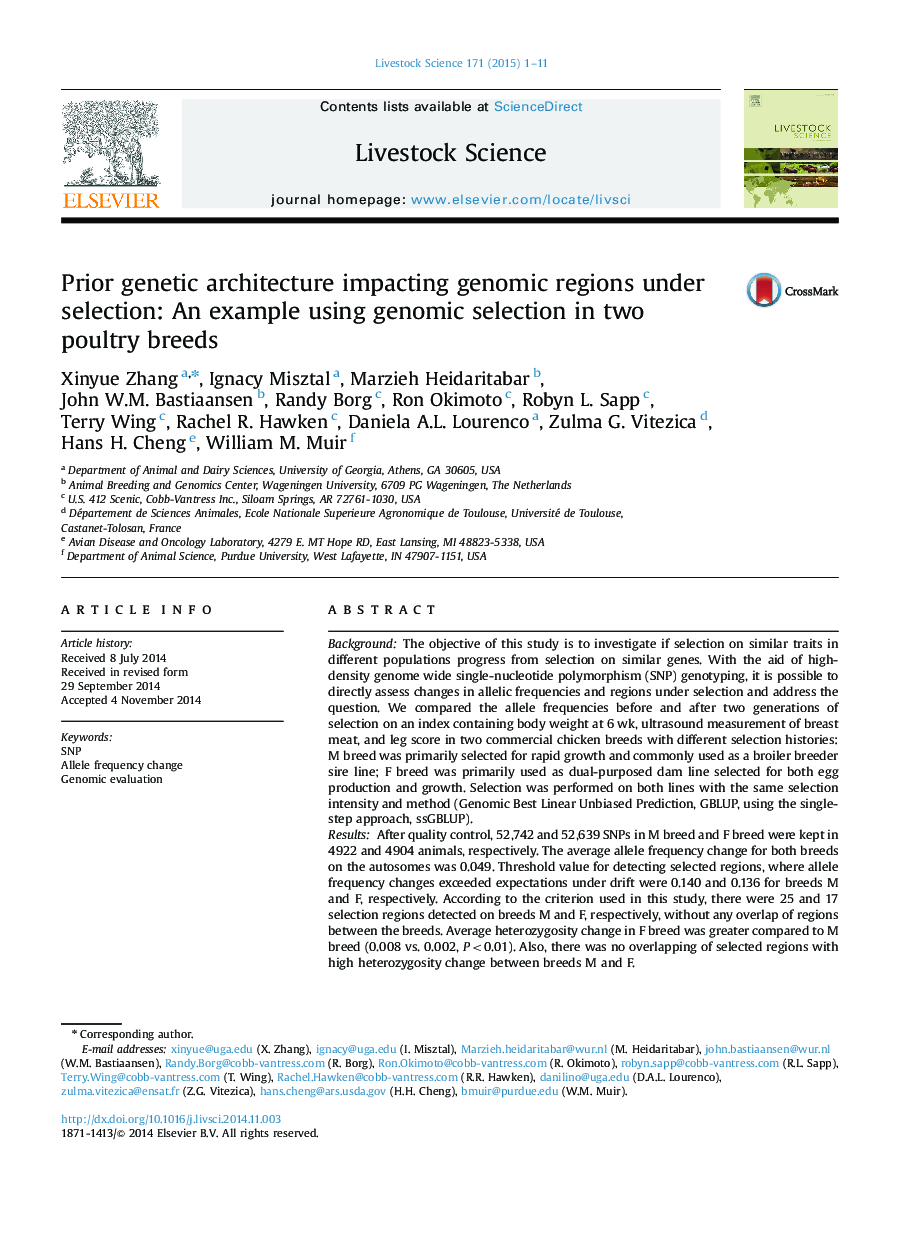| کد مقاله | کد نشریه | سال انتشار | مقاله انگلیسی | نسخه تمام متن |
|---|---|---|---|---|
| 2447187 | 1553961 | 2015 | 11 صفحه PDF | دانلود رایگان |
• We inspected the impact of recent three-year selection on the genomic architecture, rather than impact of all selections historically.
• We investigated the pure allele frequency change during selection, and developed a novel method (gene dropping) to simulate the random selection baseline.
• Our findings suggested a strong impact from previous selection. The same selection goal did not identically change genomic architecture in different chicken lines.
BackgroundThe objective of this study is to investigate if selection on similar traits in different populations progress from selection on similar genes. With the aid of high-density genome wide single-nucleotide polymorphism (SNP) genotyping, it is possible to directly assess changes in allelic frequencies and regions under selection and address the question. We compared the allele frequencies before and after two generations of selection on an index containing body weight at 6 wk, ultrasound measurement of breast meat, and leg score in two commercial chicken breeds with different selection histories: M breed was primarily selected for rapid growth and commonly used as a broiler breeder sire line; F breed was primarily used as dual-purposed dam line selected for both egg production and growth. Selection was performed on both lines with the same selection intensity and method (Genomic Best Linear Unbiased Prediction, GBLUP, using the single-step approach, ssGBLUP).ResultsAfter quality control, 52,742 and 52,639 SNPs in M breed and F breed were kept in 4922 and 4904 animals, respectively. The average allele frequency change for both breeds on the autosomes was 0.049. Threshold value for detecting selected regions, where allele frequency changes exceeded expectations under drift were 0.140 and 0.136 for breeds M and F, respectively. According to the criterion used in this study, there were 25 and 17 selection regions detected on breeds M and F, respectively, without any overlap of regions between the breeds. Average heterozygosity change in F breed was greater compared to M breed (0.008 vs. 0.002, P<0.01). Also, there was no overlapping of selected regions with high heterozygosity change between breeds M and F.ConclusionsThe results indicate that in newly selected populations, even using the same criteria and selection methods, the historical selection goals and breed development determine the loci that most impact selection progress. These results are consistent with quantitative genetic theory that contribution of loci to selection progress depends on initial allele frequency. Therefore it should not be assumed that the same loci will be under selection in different populations even if similar selection goals and methods are used.
Journal: Livestock Science - Volume 171, January 2015, Pages 1–11
